By
Marc in
Environment & Nature,
History & Factoids
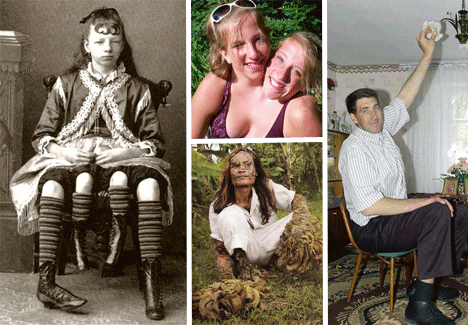
The process of growing from a few cells to a fully formed adult is a harrowing one, full of millions
of years of evolutionary tricks that help us develop unscathed. Despite everything, there are still mistakes: one missing gene or chromosome, or one too many, and a child’s development can be skewed in a very odd way. It’s remarkable that human growth and development goes so smoothly, despite the numerous opportunities for errors. Here are 10 cases where things went wrong:
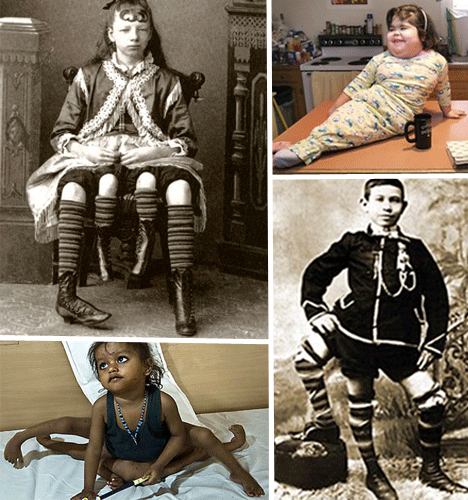
It’s pretty easy to assume your child will emerge with two fully formed legs, but sadly, this isn’t always the case. From one leg to four, there are scores of children with rare genetic defects, or people who have incorporated all or most of a twin into their own bodies. The most famous (and recent) example is Lakshmi, who was born with four arms and four legs, and thought by many to be a reincarnation of a Hindu goddess.

Pituitary glands secrete hormones that tell our bodies to grow. When the gland secretes excessively, you have someone who grows as if they’re an adolescent well beyond puberty. Gigantism requires that a person’s height be several standard deviations above the tallest 1% of the population. Robert Wadlow, the tallest recorded man to ever live, was 8 ft. 11.1 inches tall at the time of his death at the age of 22, and his growth had given no indication of slowing down.
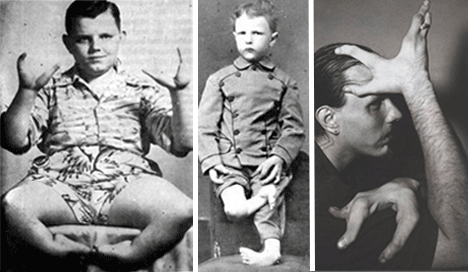
Ectrodactyly is a condition where digits or limbs are either fused or missing. Often called “Lobster Claw Syndrome” a lot of victims of this congenital defect have become sideshow performers, billing themselves with monikers such as “Lobster Boy.” The fused limbs can have surprising functionality in certain cases, but often require the use of a wheelchair.
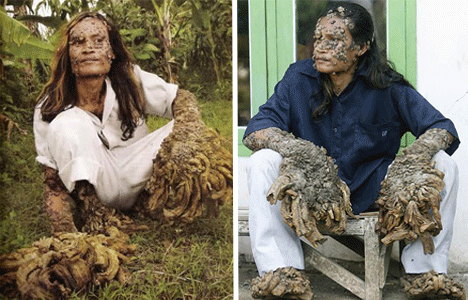
Dede Koswara has an extremely rare genetic defect known as Epidermodysplasia Verruciformis that renders his body incapable of fighting off various strains of HPV, which is present in 80% of the world population. Dede has become an internet sensation, and is often described as half tree / half man. There have been several made for television documentaries about his condition and his attempts to treat it, but no treatment has been entirely successful.
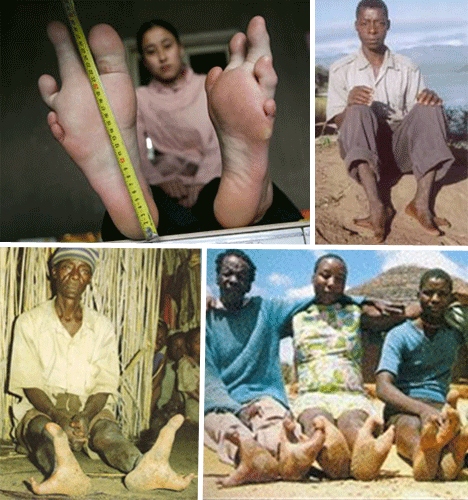
There is a tribe of people living in Zimbabwe known as the Vadoma, that have become known as the “Ostritch People” for the prevalence of electrodactyly in their population. Many of the tribe members are born with fused toes that appear ostritch like. The tribe maintains a consistent population of such births due to their relative isolation. Those with this condition are not handicapped, and are well integrated into the tribe.

Conjoined twins first became famous with the traveling brother Cheng and Eng, but are now a well known phenomenon. This condition is caused by twin embryos remaining attached during development. These twins will often share limbs and organs, and separation is typically an incredibly dangerous option that could result in the death of one or both of the twins. Most conjoined twins are functional to some degree, and lead active lives.
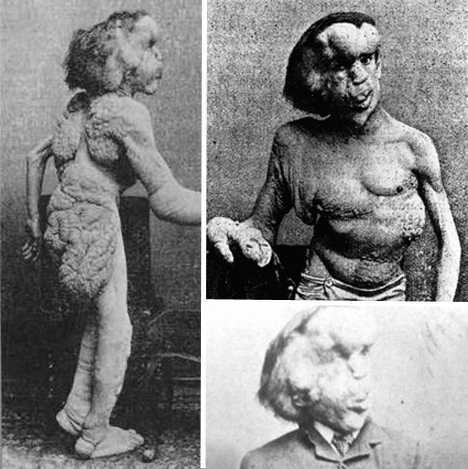
Joseph Carey Merrick, better known as “The Elephant Man,” became well known in British circles during the Victorian Era. Born with a congenital disorder that began to change his appearance at the age of three, his startling disfigurement made him a popular sideshow attraction. When sideshows were made illegal in England, Joseph was taken in by a doctor and taught to be a gentleman in both manner and dress.
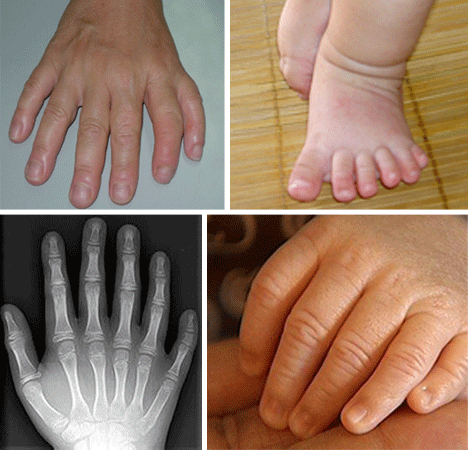
Polydactyly is a condition in which extra digits are present. In the majority of cases the extra digit is unusable and removed at an early age. Polydactyly is relatively rare in humans, but incredibly common in cats, and it’s not unusual for them to have three or more extra digits on each paw.
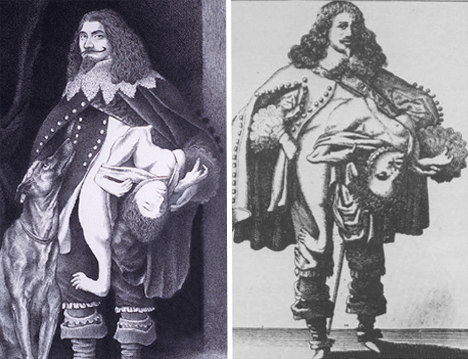
Lazarus and Joannes Baptista Colloredo were conjoined twins in a unique situation. While Lazarus was fully functioning, his twin Joannes was parasitic, living on the side of Lazarus but without true consciousness. When touched, he would move and show basic reactions, but nothing more. The twins were a popular attraction in Italy in the late 17th century.
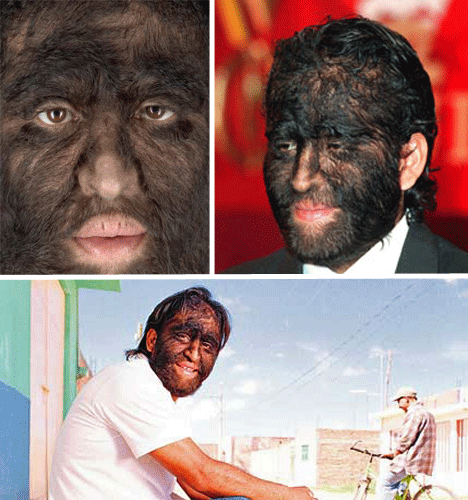
Jesus Aceves is one of several members of his family to have a rare condition known as hypertrichosis, that causes hair to grow all over his face. He attempted to shave and acquire regular work, but quickly realized it was much more lucrative on the sideshow circuit. Several of his other family members have the same condition, including his sister Lili.














